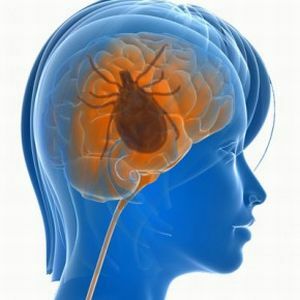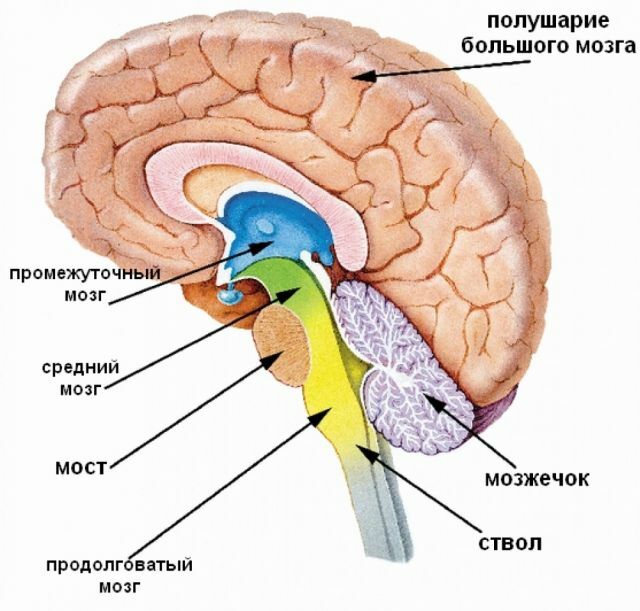 Brucellosis is a disease of bacterial origin caused by microorganisms of the genus Brucella.
Brucellosis is a disease of bacterial origin caused by microorganisms of the genus Brucella.
Circulating in the blood, this pathogenic causative agent causes multiple lesions of the nervous, cardiovascular, locomotor and genital system of a person, so treatment should be started as soon as possible.
Pathways of infection
Brucellosis can be infected from infected pigs, as well as small and large cattle. Dogs, camels and other animals are rarely a source of infection.
The same applies to the likelihood of transmission of infection from a sick person to a healthy person. It should be noted that not every ingestion of brucella into the body leads to the development of the disease, but people become infected when they directly contact meat, blood, saliva, feces, and the amniotic fluid of a sick animal. 
This explains why brucellosis occurs mainly among milkmaids, veterinarians, shepherds and other specialists working in the field of animal husbandry. Penetration of a pathogenic microorganism into human blood causes damage to the skin, mucous membrane, while enough brucellosis is enough to infect it.
Bacteria can enter the body through food - if you use foods made from milk or meat from an infected animal.
Brucellosis is also transmitted by airborne droplets, but this does not happen often. Brucella enters the respiratory system during laboratory work, which indicates a low probability of infection.
The disease occurs mainly in persons aged 18 to 55 years, and is often professional for rural workers. A person who has suffered brucellosis develops temporary immunity against the disease, which lasts no more than 5 years.

How to identify the disease
Manifestations of the disease are related to the work of the patient's immune system. Therefore, one can easily transfer it, and someone starts to develop a difficult process. In an organism with weak immunity, even a live vaccine leads to a violent response.
The incubation period of the disease lasts from 3 weeks to several months.
The development of the disease and its consequences is directly related to the type of pathogen:
- So, B. Abortus , lead to the development of a mild disease, but more often it goes into a chronic form.
- Because of the activity of the bacterium B. Suis , abscesses develop.
- Pathogenic activity of B. Melitensis causes brucellosis of severe course. The latter form of the disease leads to disability.
Diagnosis is complicated by the fact that the first manifestations of the disease are similar to the symptoms of influenza.
For the initial stage of the disease, the following symptoms are typical:
- a classic symptom of brucellosis - a "temperature candle"( a sharp rise to 39 ° C), mostly in the afternoon and in the evening;

- pain syndrome in the back, head;
- burning sensation in hands and feet;
- impaired appetite followed by a decrease in body weight;
- sweating, especially at night;
- general weakness.
Acute brucellosis in young people develops sharply, in older persons - gradually, for this form, the following symptoms are characteristic:
- sleep disturbance, lack of appetite;
- feeling of weakness, malaise;
- mood swings and other neurological syndromes;
- muscular, joint pain syndrome;
- sudden temperature rise;
- chills, profuse sweating;
- enlargement of the liver, spleen, lymph nodes.
In the subjacent form there are:
- alternating fever with normal temperature;
- the moment of a rise in temperature is characterized by a bradycardia( disturbance of frequency of a rhythm of heart);

- weakness;
- muscular, joint pain syndrome;
- at normal temperature level there is a strong thirst, disturbances of a chair, pulse is quickened;
- develops allergic reactions( rash, dermatitis);
- diseases of the joints, as well as organs of the reproductive system;
- is an infectious-toxic shock followed by the development of pericarditis.
The specificity of chronic brucellosis is the duration( takes about 2 - 3 years).This form of the disease often leads to disability of the patient.
Manifestations of the chronic form of the disease:
- body temperature is usually below normal or subfebrile;
- may occur relapse of the disease;
- with secondary infection or attachment of the virus, the condition is critically worsened.
There is also a defeat of life-supporting systems of the body. In particular, the joints are deformed, the cartilaginous tissue in them quickly collapses, which impairs mobility and creates pain when trying to move them. There are fibrosis, neuritis and neurosis.
Muscle atrophy and other similar diseases develop, including those requiring surgical intervention. Chronic brucellosis affects the condition of the reproductive system, regardless of gender.
Diagnosis of the disease
Diagnosis of brucellosis is carried out by drawing up a detailed anamnesis, an analysis of the clinical manifestations of the disease.
The infected face is sent to laboratory studies, which involve bacteriological culture of the contents of lymph nodes, bone marrow and blood, for which a biopsy is previously performed. Serological diagnostics helps to detect specific antibodies in the blood.

At different stages of the course of the disease, the reactions are tested using:
- The Coombs probe - allows detecting incomplete antibodies in chronic form.
- Wright Assays - in the presence of an acute form of the disease on the 10th day will give a positive result.
- Burney tests is allergic, conducted intradermally to determine the sensitivity of body tissues to type bacteria.
Medical therapy
For the treatment of brucellosis in humans, antibiotics are used. The most effective among them are Streptomycin and Gentamicin.
 If the disease proceeds easily, it is enough to take only one antibiotic - Doxycycline, and in the absence of effect additionally prescribe Rifampicin.
If the disease proceeds easily, it is enough to take only one antibiotic - Doxycycline, and in the absence of effect additionally prescribe Rifampicin.
WHO recommends the use of Doxycycline and Rifampicin for 6 weeks to combat brucellosis in severe conditions. Then, another 6 weeks, it is necessary to take Doxycycline and Streptomycin.
Treatment of children younger than 8 years involves the use of Rifampicin and Trimethoprimoma.
When treating a disease in pregnant women, Rifampicin is used not only as an independent agent, but also in combination with Trimethoprim.
The resulting endocarditis should be treated with more aggressive antibiotic therapy, which includes the use of Doxycycline, Rifampicin and Trimethoprim, provided that the aminoglycosides are used. In a severe case, it is necessary to replace the heart valve with an artificial analogue.
The chronic form of the disease is treated with the same drugs, as well as vaccination.
If the disease is complicated by meningitis, corticosteroids should be used. In addition, if co-occurring diseases occur, the patient is prescribed anti-inflammatory drugs, analgesics.
The use of surgical treatment is performed with complication of brucellosis with purulent-septic or other phenomena. 
Patients are assigned vitamin complexes, hemopoietic stimulants such as Metacil, Pentoxil are used. In winter, patients are exposed to ultraviolet radiation.
When allergic reactions occur, antihistamines are used( Suprastin, Xizal).
During the remission of the chronic form of brucellosis, the patient is prescribed physiotherapy, physiotherapy exercises, and gives directions to the sanatorium.
Beat on all human organs and systems
The appointment of treatment in the first month of detection of signs of the disease ensures the achievement of a successful outcome. However, you should be prepared to ensure that the recovery period will be long.
The number of deaths from brucellosis is relatively small, but this pathology affects almost all parts of the body, disrupting the functioning of body systems. Complications concern joints, tissues, nerve cells, organs, and are expressed by the appearance of disturbances in the activity of the heart, the brain, and the reproductive system. Often there are infections of the liver, spleen, testicles.
The musculoskeletal system is most often affected by chronic brucellosis. The course of the disease is accompanied by muscular and  joint pain. Suffer mainly large joints, which swell and become inactive. Skin over them does not change its color. Lumbar spine often suffers.
joint pain. Suffer mainly large joints, which swell and become inactive. Skin over them does not change its color. Lumbar spine often suffers.
Brucellosis affects the nervous system, which is expressed in the development of neuritis and radiculitis. Severe course of the disease, accompanied by a violation of the central nervous system, causes meningitis, encephalitis, destructively affects the body of an infected person.
Lesions of the reproductive system disrupt the functioning of the reproductive organs, affecting the development of complex diseases, including infertility.
The functioning of the cardiovascular system is also disturbed by the infection, and manifests itself by inflammation of the heart muscle and other similar diseases.
Transfer of brucellosis during pregnancy is fraught with complications in the development of the fetus.
Effective prevention of the disease
Preventive measures aimed at preventing the development of brucellosis, suggest the following:
- refusal to consume raw dairy products and meat;
- compliance with safety regulations by rural workers, in particular, the use of disposable gloves can not be ignored;
- timely vaccination of domestic animals.
In addition, a person in contact with an animal that is infected with brucellosis should be observed by medical personnel within six months.



